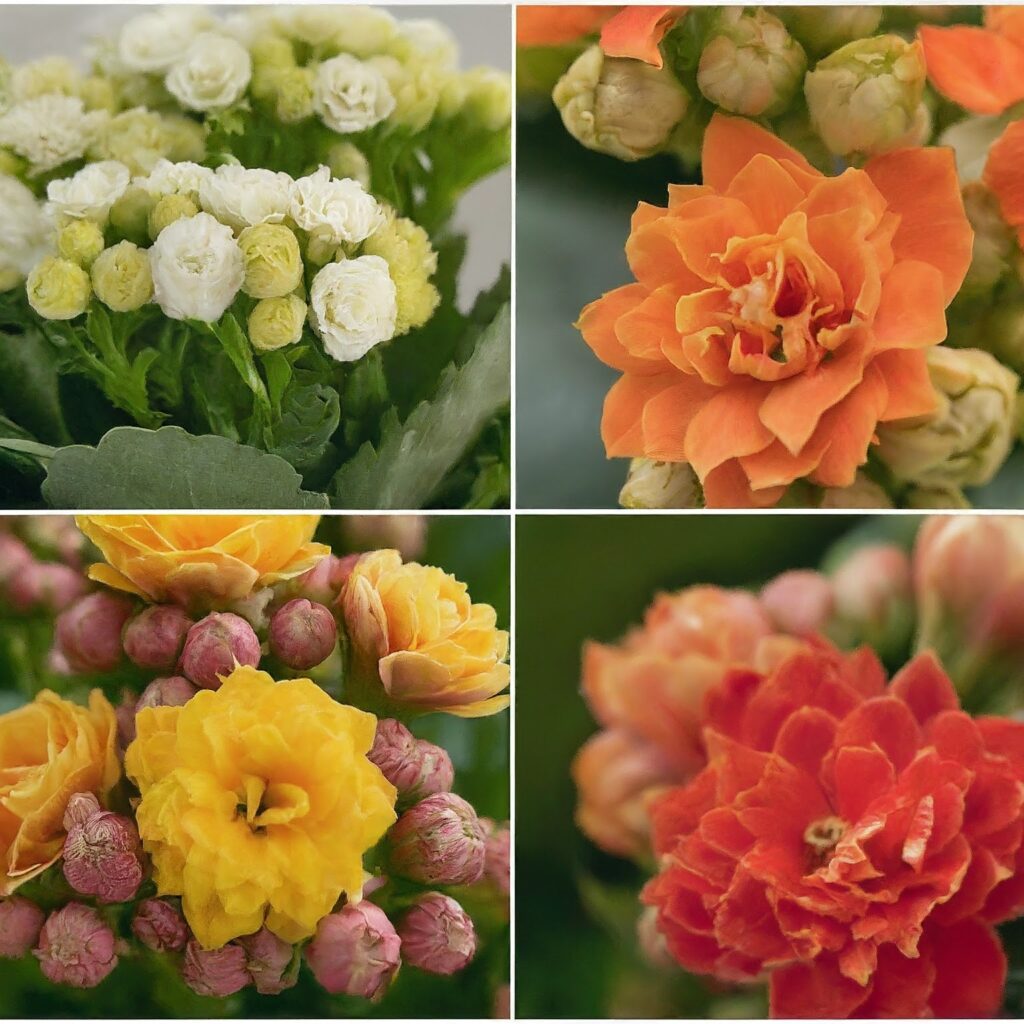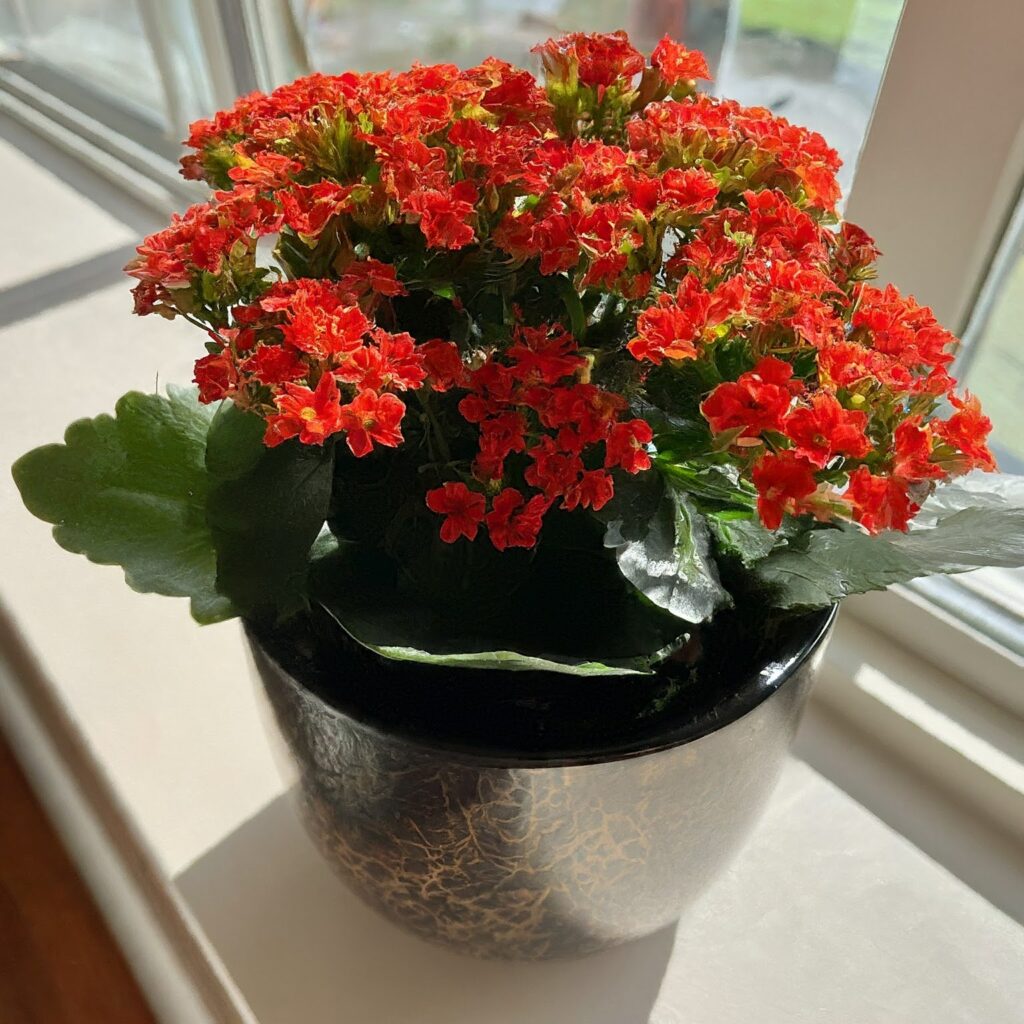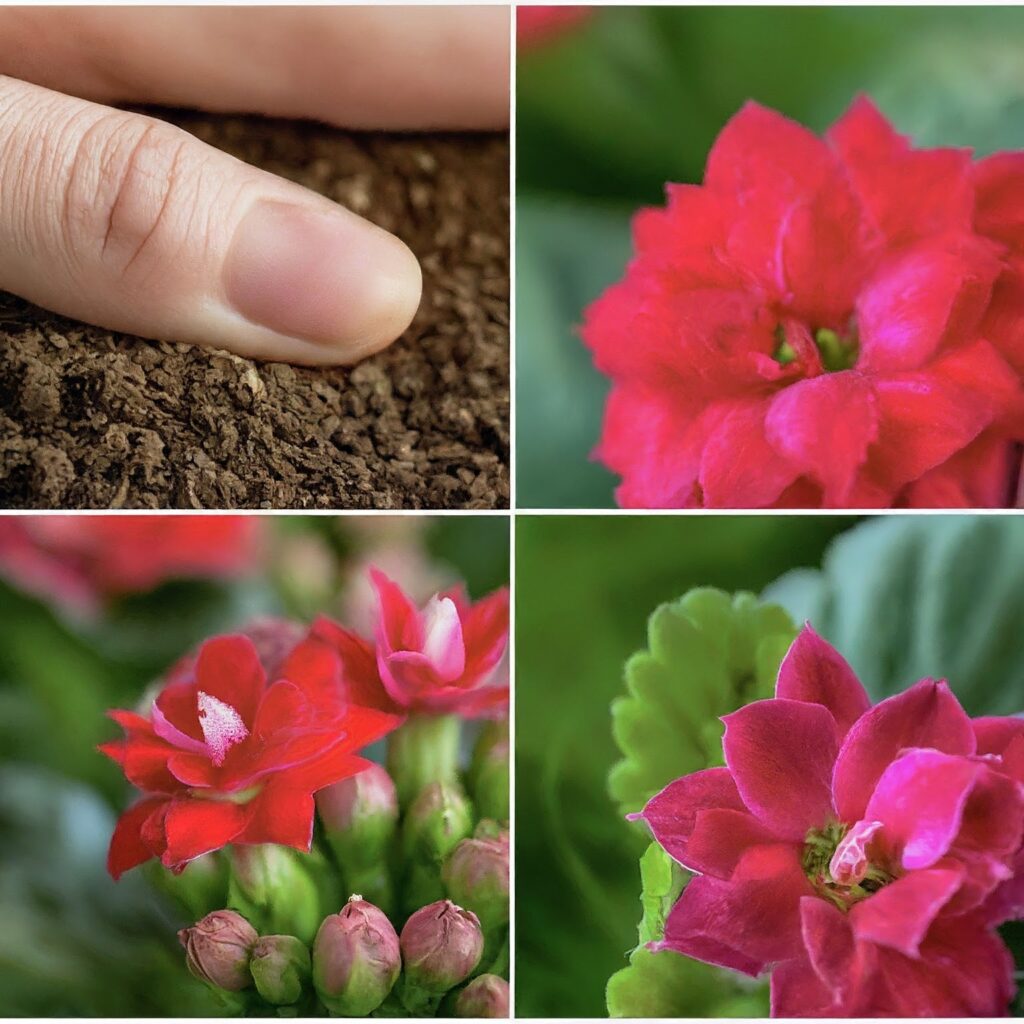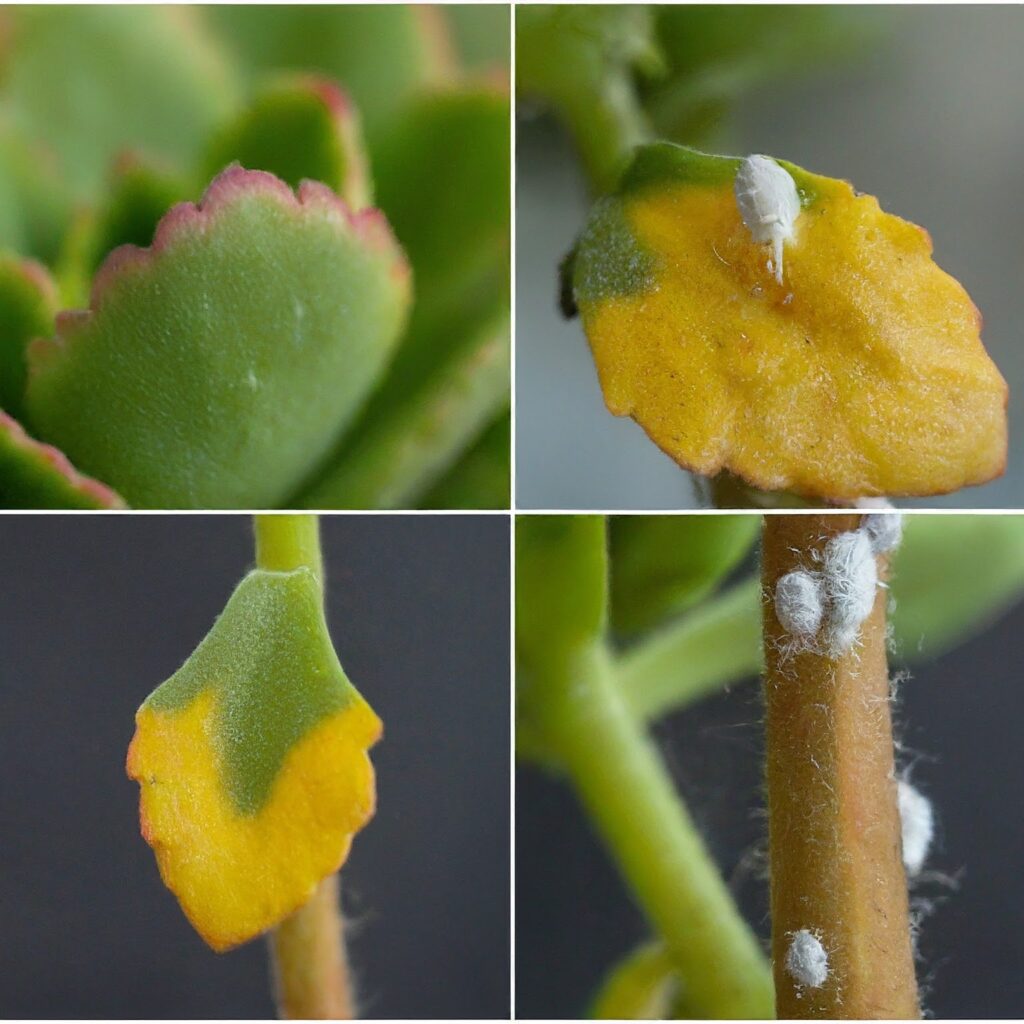Do you crave a splash of vibrant color in your home during the winter months? Maybe your houseplants are looking a little worse for wear, or the cold weather has you longing for a touch of summer cheer. If so, then the flaming katy kalanchoe (Kalanchoe blossfeldiana) might be your perfect solution!
This little succulent superstar is a favorite among houseplant enthusiasts, and for good reason. With its glossy green foliage and cheerful clusters of red, orange, yellow, pink, or white flowers, the flaming katy plant care is easy enough for even the most novice gardener.
In this guide, we’ll explore the fascinating world of the flaming katy kalanchoe, exploring its origins, unique features, and of course, how to keep this little bloomer thriving in your home.
Jump to a section:
- Flaming Katy – Profile and Facts
- Varieties of Flaming Katy Kalanchoe
- Unique Features and Benefits
- Flaming Katy – Climate and Environment for Growth
- Flaming Katy Plant Care Guide
- How to Tackle the Common Issues With Flaming Katy
- Flaming Katy Companion Planting
- Where to Buy Flaming Katy Kalanchoe
- How to Propagate Flaming Katy Kalanchoe
- Conclusion
- FAQs
Flaming Katy – Profile and Facts
Before we jump into the nitty-gritty of flaming katy plant and its care guide, let’s give you a quick snapshot of its key characteristics:
| Feature | Description |
| Botanical Name | Kalanchoe blossfeldiana |
| Common Names | Flaming katy, Christmas kalanchoe, florist kalanchoe, Madagascar widow’s-thrill |
| Plant Type | Succulent |
| Origin | Madagascar |
| Habit | Evergreen shrub |
| Height | 8-15 inches (20-38 cm) |
| Spread | 6-12 inches (15-30 cm) |
| Light Needs | Bright, indirect sunlight |
| Soil Preference | Well-draining cactus mix |
| Watering Needs | Moderate; water when soil dries out completely |
| Bloom Time | Late fall to early winter, but can flower year-round with proper care |
| USDA Hardiness Zone | 10-12 |
Flaming Katy Kalanchoe Origin and History
The flaming katy kalanchoe hails from the sunny island of Madagascar, where it thrives in the warm, dry climate. Interestingly, its journey to our windowsills wasn’t exactly straightforward.
It wasn’t until the early 20th century that German botanist Robert Blossfeld discovered the plant’s potential as a houseplant. He recognized its vibrant flowers and compact size as ideal qualities for indoor settings.
Through careful breeding and selection, Blossfeld and other horticulturalists developed the stunning varieties of flaming katy kalanchoe we enjoy today.
Varieties of Flaming Katy Kalanchoe

The world of flaming katy kalanchoe offers something for everyone! Here’s a peek at some popular varieties that will surely add a touch of personality to your space:
- Double the Drama: Looking for a truly showstopping display? Look no further than the Calandiva variety. These beauties boast stunning double flowers in a dazzling array of colors, from sunshine yellow and soft pink to fiery orange and crisp white.
- Petite Powerhouse: Living in a cozy space? The Tom Thumb variety is your perfect match! This pint-sized kalanchoe stays compact, reaching a maximum height of just 6 inches (15 cm). Don’t let its size fool you, though! Tom Thumb explodes with vibrant red blooms, making a big statement in a small package.
- Going for Gold: If you prefer a touch of elegance, the Goldrand variety is a winner. This statuesque kalanchoe grows up to 12 inches (30 cm) tall, showcasing its classic single blooms against a backdrop of rich green foliage.
- Orange Crush: Feeling bold and fiery? The Orange Triumph variety lives up to its name. This vibrant kalanchoe boasts stunning orange flowers that are guaranteed to add a burst of sunshine to any room.
Of course, these are just a few of the many flaming katy kalanchoe varieties available. With a little exploration, you’re sure to find the perfect one to complement your style and brighten your home!
Unique Features and Benefits

The Flaming Katy kalanchoe is a succulent superstar, bringing both vibrant color and unique texture to your home.
The thick, waxy leaves resemble a jade plant, but with a distinct scalloped edge that adds a touch of whimsy. Though seemingly sturdy, the leaves are quite delicate. As such, you should touch it gently to avoid breaking the brittle tips.
Flaming Katy typically reaches a compact size, topping out at around 12 inches tall and slightly wider.
The true showstopper of this plant lies in its blooms.
Flaming Katy explodes with color during the late winter and spring months, boasting clusters of vibrant flowers in shades of pink, yellow, orange, and red. This burst of color is sure to brighten any room and add a touch of cheer to the colder months.
Interestingly, these blooms can last for months with proper care, and the plant can even flower for several years if given a period of reduced daylight to simulate its natural rest period.
Beyond its dazzling good looks, the flaming katy kalanchoe offers some surprising benefits:
- Low Maintenance: This succulent is a perfect houseplant for busy people. Its drought tolerance and minimal needs make it a fantastic choice for those who don’t have a lot of time to fuss over their plants.
- Air Purifying Power: While not a miracle cure for pollution, flaming katy kalanchoe plants can help remove some common household toxins from the air, contributing to a healthier indoor environment.
- Easy Propagation: Want to share the joy with friends and family? Flaming katy kalanchoe plants are easy to propagate, allowing you to create a little army of colorful companions.
Flaming Katy – Climate and Environment for Growth
The flaming katy kalanchoe, while not native to our living rooms, thrives indoors due to its origins and some key environmental needs.
Temperature
Mimicking its native Madagascar climate, the flaming katy prefers warm to moderate temperatures. The ideal range falls between 65-75°F (18-24°C).
Avoid exposing your plant to extreme temperatures, as it can struggle with anything below 50°F (10°C) or above 85°F (29°C). During the winter months, keep it away from cold drafts coming from windows or doorways.
Light
This houseplant is a sun worshipper at heart! It thrives in bright, indirect sunlight, where it can soak up the sun’s rays without getting scorched.
South-facing windows are ideal, providing several hours of bright light daily. However, be mindful of the harsh afternoon sun, especially in hot climates.
East or west-facing windows can work too, as long as the plant receives at least 6-8 hours of good light each day.
Signs of insufficient light include leggy growth, reaching for the light source, and a lack of blooms.
Humidity
Flaming katy kalanchoe is a low-maintenance plant when it comes to humidity.
Average household humidity levels are perfectly adequate. Avoid placing it near humidifiers or in overly damp bathrooms, as this can encourage fungal diseases.
Air Circulation
Good air circulation is beneficial for preventing moisture buildup and fungal issues. You should place it in a spot with gentle airflow, but avoid putting your plant directly in the path of strong drafts or air conditioners.
Seasonal Considerations
While primarily an indoor plant, flaming katy kalanchoe can enjoy some time outdoors in warmer climates (USDA hardiness zones 10-12). However, be mindful of the following:
- Temperature: Ensure nighttime temperatures stay consistently above 50°F (10°C).
- Light: Provide plenty of bright, indirect sunlight. Avoid harsh midday sun, especially in hot climates.
- Watering: Water moderately, allowing the soil to dry completely between waterings. Be extra cautious of overwatering, as this can lead to root rot.
- Protection: Bring your flaming katy indoors before the first frost arrives.
Pro Tip: If you live in a colder climate, you can treat your flaming katy kalanchoe like a seasonal plant. Enjoy its vibrant blooms indoors throughout the winter, then transition it outdoors during the warmer months.
Flaming Katy Plant Care Guide

The flaming katy kalanchoe’s love for well-draining soil and moderate temperatures makes it perfectly suited for container life. This allows you to enjoy its vibrant blooms anywhere in your home, regardless of lighting conditions.
Here’s a comprehensive flaming katy plant care guide to set up this beauty for container success:
1. Choose the Perfect Pot
- Drainage: For happy roots, choose a pot with drainage holes at the bottom. These holes allow excess water to escape, preventing root rot, a common enemy of succulents.
- Size: Choose a pot that’s just slightly larger than the root ball of your plant. A pot that’s too big can retain too much moisture, while a pot that’s too small can restrict growth.
- Material: Consider the material of your pot. Clay pots offer excellent breathability, allowing for faster evaporation of water. However, they can also dry out the soil faster. Plastic pots retain moisture more effectively but may not provide optimal air circulation. Choose the material that best suits your environment and watering habits.
2. Potting Mix
Select a well-draining potting mix specifically formulated for cacti and succulents. These mixes typically contain a high percentage of inorganic materials like perlite or pumice, which promote drainage and prevent waterlogging.
For the DIY enthusiasts, you can also whip up your own potting mix! A common recipe is to combine equal parts of regular potting mix, perlite, and coarse sand. Ensure all ingredients are well-mixed and aerated.
3. Watering
Flaming katy kalanchoe thrives on neglect when it comes to watering. This means you should allow the soil to dry out completely between waterings. Stick your finger into the soil – if the top inch feels dry, it’s time to water.
To ensure all the roots receive moisture, soak the soil completely during watering. You’ll know you’ve done it right when water runs out of the drainage holes. Discard any water that accumulates in the saucer to prevent the plant from sitting in water.
4. Feeding Frenzy (Optional)
During the growing season (spring and summer), you can give your plant a boost with a balanced liquid fertilizer diluted to half strength. Apply it once a month according to the fertilizer instructions.
Remember, succulents are not heavy feeders. Overfertilizing can harm the plant. To mimic the natural growing cycle, hold off on fertilizer during fall and winter. This allows your flaming katy to rest and recharge for a burst of spring blooms.
5. Repotting
As your flaming katy kalanchoe grows, it may outgrow its current pot. Signs it needs a new home include roots growing out of the drainage holes or the plant becoming pot-bound (stuck and unable to grow). Repot in spring using fresh potting mix and a slightly larger pot.
6. Deadheading
To encourage continued blooming, remove spent flowers by pinching them off at the base. This will prevent the plant from putting its energy into seed production and allow it to focus on producing more blooms.
7. Pruning
If your flaming katy gets leggy or overgrown, pruning it might help maintain its shape. Use sharp, clean shears to remove any leggy stems or unwanted growth.
How to Tackle the Common Issues With Flaming Katy

While the flaming katy kalanchoe is a low-maintenance plant, even the most resilient beauties can face challenges.
Here’s a breakdown of some common issues you might encounter, along with solutions to keep your plant thriving:
1. Overwatering
This is the most frequent culprit for unhappy flaming katy kalanchoe plants. Succulents store water in their leaves, so overwatering can lead to a number of problems, including:
- Yellowing Leaves: The leaves may turn yellow and lose their plumpness, indicating the plant is taking in more water than it can handle.
- Mushy Stems: The stems may become soft and mushy, a sign of root rot caused by excessive moisture.
- Stunted Growth: The plant may appear stunted and struggle to produce new growth.
How to Avoid Overwatering:
Give your flaming katy a drink only when the soil feels completely dry to the touch.
Also, ensure your pot has drainage holes and avoid letting the plant sit in water. Empty any water that accumulates in the saucer after watering.
For very unhappy plants, repotting might be the answer. Remove the plant from its pot and gently remove any mushy or damaged roots. Then repot in fresh, well-draining cactus mix in a pot with proper drainage.
2. Pests and Diseases
- Mealybugs: These tiny, white, sap-sucking insects can cluster on the leaves and stems of your plant. They leave behind a sticky residue and can weaken the plant.
- Aphids: Watch out for these tiny, soft-bodied insects! Aphids love to munch on your plant’s sap, weakening it over time. They can cause leaves to curl and distort.
Combating Pests:
- Isopropyl Alcohol Solution: For a mild infestation, try mixing a solution of 1 part isopropyl alcohol with 3 parts water. Dab the solution onto cotton swabs and use them to wipe off the pests.
- Insecticidal Soap Spray: For a more severe infestation, consider using an insecticidal soap spray specifically formulated for houseplants. For best results, follow the application instructions on the label.
- Neem Oil Spray: Neem oil spray is another natural option for pest control. It can be effective against a variety of pests, including mealybugs and aphids. Always test the spray on a small area of the plant first to check for phytotoxicity (plant damage).
3. Other Potential Issues
- Lack of Light: Flaming katy requires bright, indirect sunlight for optimal growth. Signs of insufficient light include leggy growth, reaching for the light source, and a lack of blooms. Move your plant to a brighter location or supplement with artificial grow lights during the winter months.
- Lack of Blooms: If your flaming katy kalanchoe isn’t flowering, it could be due to several factors. Insufficient light is a common culprit. Other possibilities include overwatering, lack of fertilizer during the growing season, or the plant simply needing a rest period after blooming.
It is a good idea to regularly inspect your flaming katy kalanchoe for signs of pests or diseases. Early detection and treatment will help prevent serious damage and keep your plant healthy and vibrant.
Flaming Katy Companion Planting

Looking to create a vibrant indoor display? Consider companion planting. Flaming katy kalanchoe pairs beautifully with other low-maintenance flowering houseplants.
Flowering Friends
- African Violets: These delicate beauties come in a stunning array of colors and bloom throughout the year. Their compact size and similar light requirements make them ideal companions for flaming katy kalanchoe.
- Bromeliads: These unique tropical plants add a touch of the exotic with their vibrant flowers and air-purifying qualities. Most bromeliads prefer similar bright, indirect light as the flaming katy kalanchoe.
- Christmas Cactus (Schlumbergera): This seasonal bloomer complements the flaming katy perfectly, providing vibrant blooms during the winter months. Both plants share similar watering needs and prefer well-draining soil.
Foliage Focus
- Jade Plant (Crassula Ovata): This low-maintenance succulent boasts thick, glossy leaves that add a touch of sculptural interest to your arrangement. Both the jade plant and flaming katy kalanchoe thrive in similar conditions and require infrequent watering.
- Snake Plant (Sansevieria): An air-purifying powerhouse, the snake plant provides vertical interest with its tall, upright leaves. It thrives on neglect and tolerates lower light levels than the flaming katy, making it a great choice for a partially shaded corner.
- String of Pearls (Senecio Rowleyanus): This cascading succulent adds a touch of whimsy with its long, trailing stems adorned with pea-sized, pearl-like leaves. Both plants appreciate bright, indirect sunlight and well-draining soil.
Where to Buy Flaming Katy Kalanchoe
Finding a flaming katy kalanchoe is quite easy. These popular plants are readily available at most garden centers, nurseries, and even some grocery stores during the fall and winter months. Look for healthy plants with vibrant foliage and plenty of flower buds.
How to Propagate Flaming Katy Kalanchoe
The beauty of the flaming katy kalanchoe extends beyond its cheerful blooms. This plant is surprisingly easy to propagate, allowing you to create new plants and share the joy with friends and family.
There are two main methods: stem cuttings and leaf cuttings.
Propagation by Stem Cuttings
- Choose Your Cuttings: Select healthy, non-flowering stems that are at least 3-4 inches (7.5-10 cm) long. Look for stems with a few sets of leaves.
- Make the Cut: Using sharp, sterilized pruning shears, cut the stem cleanly just below a leaf node (the bump where the leaf meets the stem).
- Callus Time: Allow the cut end of the stem to callous over for a few days. This simply means letting it dry out slightly, which helps prevent rot when planted.
- Potting Up: Fill a small pot with a well-draining cactus mix. Make a hole in the center of the mix and insert the calloused end of the cutting. Lightly tamp down the soil around the base of the cutting to ensure good contact with the roots.
- Water Wisely: Water the soil lightly and then place the pot in a bright, indirect light location. Avoid overwatering, as this can be detrimental to the new roots.
- Patience is Key: Rooting can take several weeks. Water thoroughly, then allow the soil to dry slightly before watering again. You’ll know your propagation is successful once you see new growth emerging from the top of the cutting.
Propagation by Leaf Cuttings
- Selecting the Right Leaf: Choose a healthy, mature leaf from your flaming katy kalanchoe.
- The Big Snip: Using sharp, sterilized pruning shears, carefully remove the leaf from the stem.
- Lay It Flat: Place the leaf flat on a well-draining cactus mix (damp, but not soggy). You can gently score the underside of the leaf’s main vein with a sterile knife to encourage root development.
- Light and Love: Provide bright, indirect light and keep the soil slightly moist. Don’t expect instant results! It can take several weeks for tiny plantlets to sprout from the edges of the leaf.
- Transplanting Time: Once the plantlets have developed a few sets of leaves, you can carefully transplant them into their own small pots filled with fresh cactus mix.
Regardless of the propagation method you choose, remember to use sterilized tools to prevent the spread of disease.
Conclusion
The flaming katy kalanchoe is a delightful addition to any indoor space. With its vibrant blooms, low-maintenance requirements, and ease of propagation, it’s a perfect plant for both seasoned gardeners and enthusiastic beginners.
So, why not bring a burst of color and life into your home with this charming succulent superstar?
FAQs
1. Why aren’t my flaming katy kalanchoe flowers blooming?
There are a few reasons why your flaming katy kalanchoe might not be flowering. The most common culprit is insufficient light. These plants need plenty of bright, indirect sunlight to trigger flower production.
Other possibilities include overwatering, lack of fertilizer during the growing season, or the plant simply needing a rest period after blooming.
2. Can I get my flaming kalanchoe to bloom again?
Yes, with a little TLC! Here are some tips:
- Light it Up: Ensure your plant receives at least 6-8 hours of bright, indirect sunlight daily.
- Shorter Days: To encourage blooming, simulate shorter days by providing your flaming katy kalanchoe with only 8-10 hours of light per day for 6-8 weeks. You can achieve this by covering the plant with a dark cloth for a specific period each day.
- Feeding Time: During the growing season, provide a balanced liquid fertilizer diluted to half strength once a month.
- Patience is Key: Don’t expect instant results. It may take several weeks or even months for your plant to set flower buds after making these adjustments.
3. My flaming katy kalanchoe leaves are falling off. What’s wrong?
Dropping leaves can indicate several issues.
The most likely culprit is overwatering. Let the soil dry out completely between waterings to prevent problems.
Other possibilities include underwatering, inadequate light, or pests like mealybugs or aphids. Inspect your plant carefully and adjust your care routine accordingly.
4. Is flaming katy kalanchoe poisonous to pets?
Unfortunately, the leaves of flaming katy kalanchoe contain cardiac toxins (bufadienolides) that can be harmful to pets if ingested. If you have curious cats or dogs, it’s best to keep this plant out of reach.

